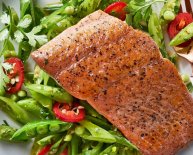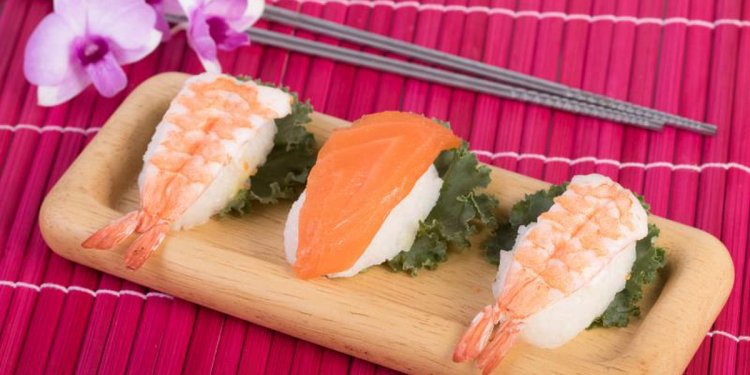
Eating healthy Sushi
Sushi is an instant and simple way to obtain protein. If you’re selecting a high-protein dinner or snack, pick tuna, salmon or rainbow rolls, which could have 20 or even more grms of necessary protein per roll.
The omega-3 essential fatty acids within fish benefit your cardiovascular wellness, plus they're all-natural anti-inflammatory substances and play a role in brain function. Choose salmon, trout and tuna if you’re looking to get omega-3 fatty acids.
Shrimp tempura moves have become saturated in sodium. Photo Credit EzumeImages/iStock/Getty ImagesAmong the significant downsides of sushi is its reasonably high salt content. Even though the nutrition information for sushi is different from roll to roll, and from restaurant to restaurant, numerous sushi rolls have a substantial quantity of sodium.
Including, a lobster shrimp roll at one preferred United states sushi restaurant has 1, 030 milligrams of sodium. That is excessive sodium, considering the fact that the top of intake limitation for sodium is 2, 300 milligrams, plus than 1 / 2 of individuals into the U.S. are restricted to an everyday consumption of 1, 500 milligrams considering high blood pressure as well as other health issues or any other elements.
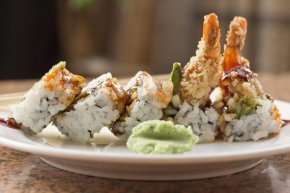 Tempura rolls, king-crab rolls and calamari moves also contain sigbificantly more than 1, 000 milligrams of sodium per portion.
Tempura rolls, king-crab rolls and calamari moves also contain sigbificantly more than 1, 000 milligrams of sodium per portion.
Ever before question the reason why sushi rice tastes so excellent? Typical sushi rice is produced with sugar and rice vinegar. On average there clearly was one tablespoon of sugar per cup prepared sushi rice. And every sushi roll contains about one glass of white rice on it. So, the rice in a single roll alone includes 240 calories. And most individuals will do have more than one roll because their meal.
Conventional white sushi rice can also be high in processed carbs, which aren't your healthiest option. White rice digests rapidly and results in a spike in blood sugar that leaves you hungry after consuming.
Although USDA dietary tips enable up to 50 % of your everyday grain intake in the future from processed carbohydrates, you are better off picking a whole-grain option. Give consideration to requesting sushi made with brown rice. Brown rice is greater in fiber, rendering it more filling than white rice, and consuming whole grains reduces your chance of diabetes and heart disease.
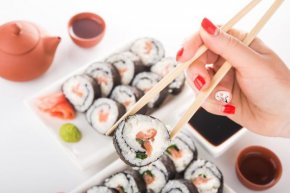 The healthiest option is opt for sashimi (raw fish without rice) over maki sushi, that are the moves.
The healthiest option is opt for sashimi (raw fish without rice) over maki sushi, that are the moves.
IDEAL SUSHI ROLLS:
1. Fresh raw seafood like salmon, tuna or trout
2. Vegetable moves such as cucumber, asparagus or avocado moves
3. Rolls with brown rice instead of traditional white sushi rice
4. Rolls without sauces
Types of GOOD sushi roll options feature:
* Tuna rolls (maybe not "spicy” tuna moves, though – the spicy sauce is primarily mayo)
* Rainbow rolls
* Ca moves created using genuine crab
THE WORST SUSHI MOVES:
1. Crunchy or tempura moves – Thick batter and frying add bad fats.
2. Unagi/Eel sauce rolls – the principal components inside unagi sauce tend to be soy sauce (salt) and sugar.
3. Cream cheese moves – Cream cheese adds extra taste, additionally excess fat.
4. "Creamy" moves – Creamy sauces add fat, and.
5. Hot rolls – "Spicy" is shorthand for mayonnaise mixed with chili paste.
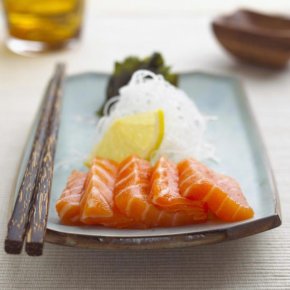 Examples of BAD roll choices consist of:
Examples of BAD roll choices consist of:
* Shrimp or vegetable tempura rolls
* Spicy tuna moves
* Philadelphia (includes cream-cheese) moves
* Spider moves (a double-whammy of fried soft-shell crab and spicy mayo)
* Dynamite rolls (spicy mayo sauce) and eel.
Even better than purchasing a roll, elect to order sashimi (slim cuts of high-quality raw fish served on its own, without having the rice present in maki sushi, which are the moves).
Each serving of sashimi has even more seafood therefore you’ll have more protein and omega-3s. Ordering sashimi additionally lets you stay away from huge amounts of carbs. Just make sure to select a high-quality sushi restaurant, as it's essential to only use the best-quality catch sashimi.
Tuna features a reasonable amount of mercury. For lower-mercury options choose sushi or sashimi created using salmon or shrimp. Picture Credit Lisovskaya/iStock/Getty ImagesWhether you're appreciating sushi or sashimi, you will have to hold a couple of wellness factors at heart.
A number of the kinds of seafood always make sushi are large or reasonably full of mercury, so it’s better to enjoy these seafood moderately. Albacore tuna, for example, has a reasonable quantity of mercury, and swordfish and mackerel tend to be high-mercury seafood is averted, in accordance with the U.S. ecological coverage department. For lower-mercury choices choose sushi or sashimi fashioned with salmon or shrimp.
Make sure you're in addition enjoying sushi at a clear, reputable restaurant with competent sushi chefs. Sushi which haven't been stored or prepared precisely presents a risk of foodborne illness from pathogens like E. coli. Go with industrially-processed sushi, like frozen sushi present some grocery stores. Research posted inside Journal of Food coverage in 2008 discovered that frozen sushi features a lowered chance of contamination than fresh sushi from a sushi bar.
You need to point out, however, that frozen sushi is certainly not entirely safe both. As a 2015 outbreak of salmonella in frozen tuna sickened 65 folks in 11 says showing that freezing cannot avoid every pathogen from contaminating natural fish.

